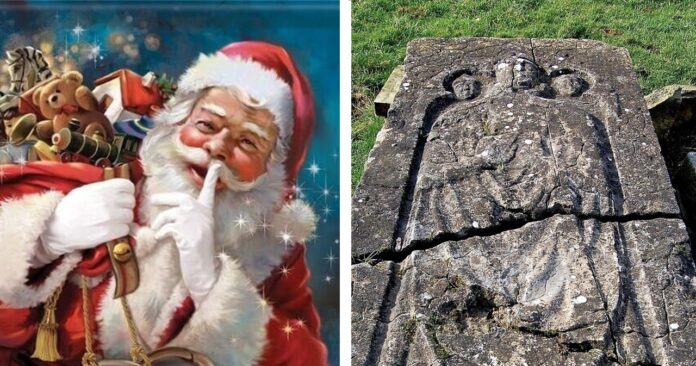Ireland may be a small island and home to less than seven million people but for the western world it has been a cultural powerhouse having a significant impact on many aspects of culture. Its influence has spread into long standing traditions around holidays, superstitions, entertainment and more making it a must travel pilgrimage trip for many.
But for many you still may not know Ireland’s darker links to some of the world’s more joyous and light hearted holidays including Christmas, Valentine’s Day, St. Patrick’s Day and Halloween.
So let’s explore the real truth behind some of your favourite holidays…
Christmas and the stolen corpse
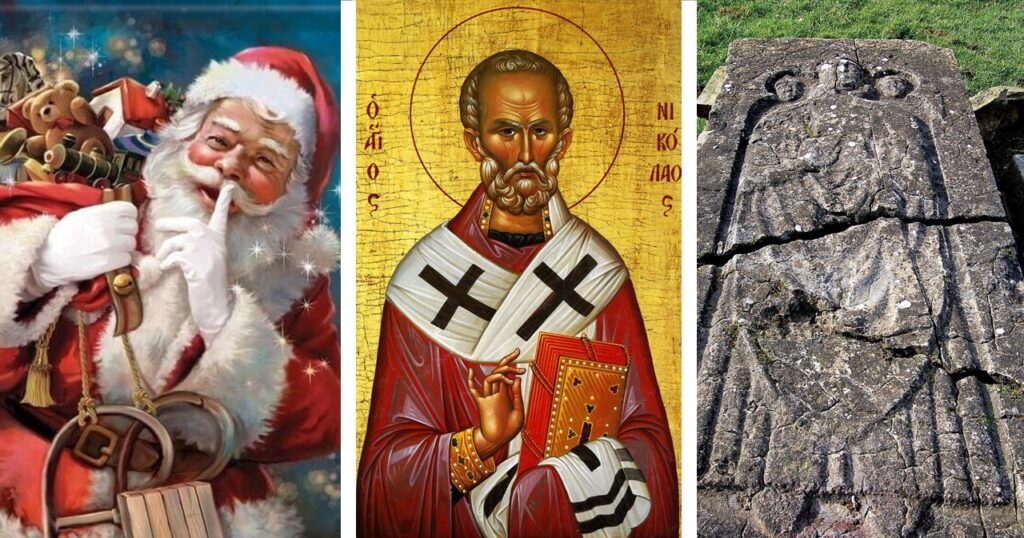
Many of the most common Christmas customs revolve around gift giving and bringing joy to children assisted by a celebrated figure who embodies the generous spirit of the season. Christmas’s gift-giving characters of Santa Claus, Father Christmas and Saint Nick are all based on an actual person. Saint Nicholas of Myra, a Christian Bishop from Greece who lived from the third to fourth century.
Saint Nicholas is known as the Patron Saint of children, but also sex workers, alcohol brewers, repenting thieves, the unamarried and pawn brokers among others. He is legendary for his stories of secret gift giving which link the closest to Christmas but that’s not all. He is also known for many legends including having brought murdered children back from the dead who had been pickled post mortem to be sold as meat, exorcising demons and calming sea storms amongst many more sainthood earning tasks.
The Basilica di San Nicola in Bari, Italy, is said to be his primary resting place. But a running theme in this article is that the body parts of Saints were heavily sought after items much like rare trading cards or collectors items as everyone wanted to have a piece of the most well known Saints to worship in their own country and churches.
St. Nicholas’s remains were said to have been stolen from his original burial ground by two Norman Soldiers in the 12th century and buried in a marked grave near Thomastown in County Kilkenny. The Tomb of St. Nicholas, a gravestone said to depict St. Nicholas in front of the two soldiers who commandeered his remains.
So if you’re wanting to pay homage to Father Christmas, you only need to go far as Ireland!
Valentine’s Day and a beheaded Saint
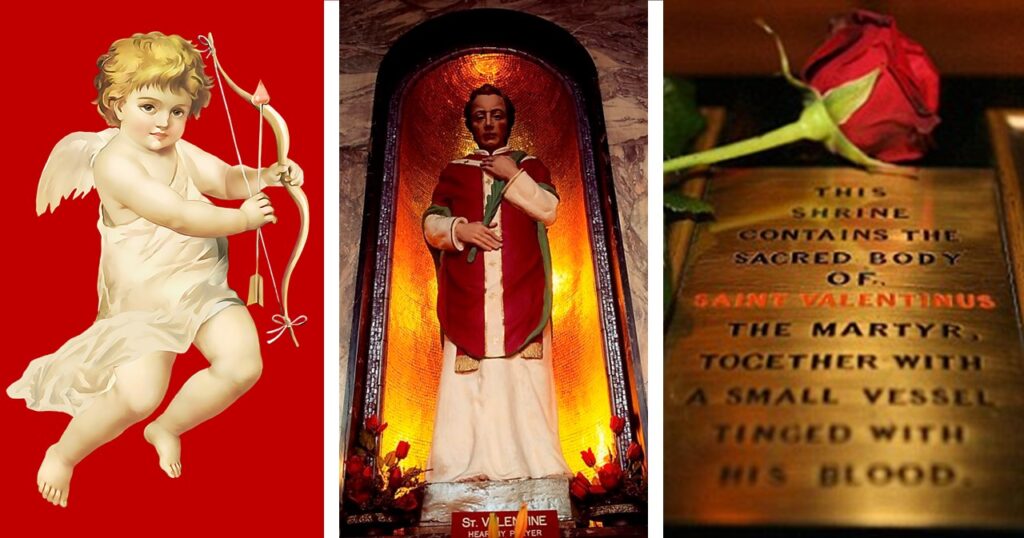
Valentine’s Day, AKA the Feast of Saint Valentine, is a day annually celebrated in the name of love and matchmaking. But the day is in honour of Saint Valentine born in Italy in the third century who was the Patron Saint of love but also of epilepsy, beekeepers, etc.
Valentine’s link to love is from carrying out illegal marriages between adoring partners without any regard for his own safety. As a holy priest, though marriages and engagements had been banned, he continued to marry couples in private. It’s believed that “on February 14, 278AD, Valentine was beaten with clubs and then executed by beheading”. He was buried in Italy.
But in 1836 an Irish priest was given permission to exhume his remains in Italy to borrow a few of his bones and stains of his blood to be rehomed in the Whitefriar Church in Dublin, a now popular visiting spot for the newly engaged arriving to pray for long and healthy marriages. So now you know where to go to start your marriage off right!
The “Snakes” of St. Patrick’s Day
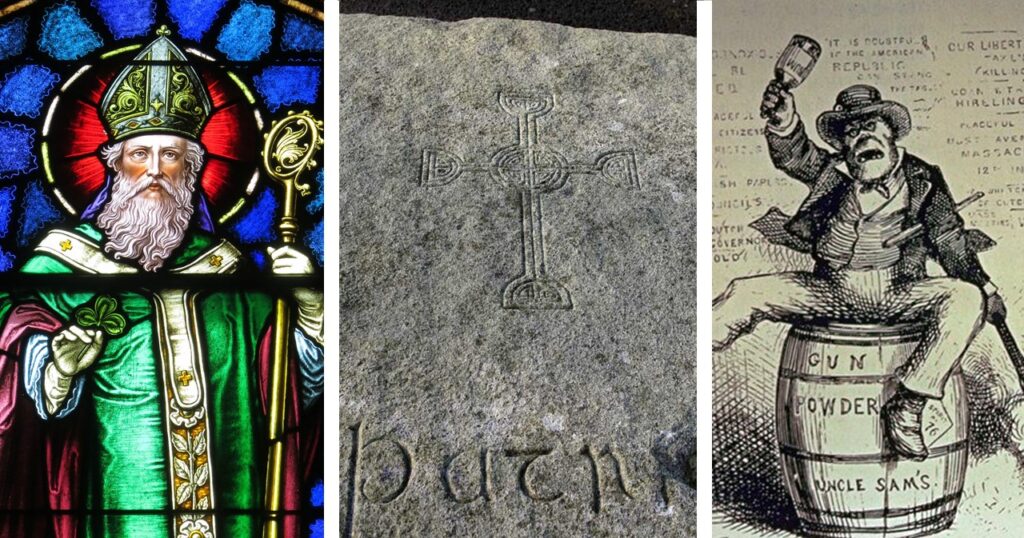
St. Patrick’s Day has become known as a celebration of all things Irish. But it’s a holiday in celebration of Saint Patrick who was born in Great Britain in the 4th century. Our story begins when he was kidnapped by Irish raiders and brought to Ireland as a slave.
Patrick managed to escape back to his homeland after six years where he became a priest but then chose to return to Ireland to save the Pagan Irish people by converting them to Christianity until his death on March 17th. This date would come to be the day to celebrate St. Patrick for his role in bringing Christianity to Ireland, chasing figurative “snakes” out of the land and its people. No, St. Patrick didn’t drive real snakes out of Ireland.
His body is buried and cherished on the grounds of Down Cathedral in Downpatrick, Northern Ireland but one of his teeth is also at the National Museum of Ireland in Dublin.
The darker side of St. Patrick’s Day is that globally it’s often celebrated through negative Irish stereotypes including excessive drinking and also imagery of leprechauns. The modern version of the latter has been questioned as originating from derogatory 19th century cartoon depictions of the Irish as opposed to accurate interpretations of actual Irish mythology.
Halloween and pagan rituals
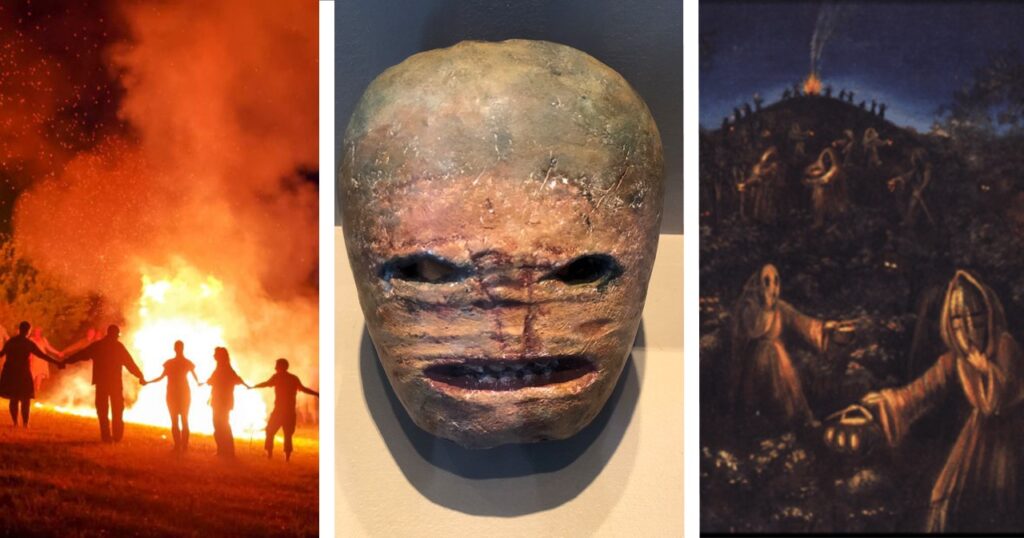
The timing and many of the traditional customs of Halloween today are said to have originated in Ireland from the pagan Gaelic festival, Samhain. Samhain was celebrated from the eve of October 31st and into November 1st and marked the start of winter and the transition to darker days in the Celtic Calendar.
On this night, the division between this world and the spirit world was thinnest which would allow spirits or fairies to pass through. It was believed that ancestors and family members would come back from the dead and return home so food would be left for them at the dinner table. While harmful spirits would be evaded by disguising oneself with costumes and masks which could also earn you food and drink when going door to door.
Bonfires, divination and turnip lantern carving were all favourite pastimes. And the festival is also said to have been linked to animal and potentially even human sacrifices.
A rich but dark history
Ireland’s past, traditions and stories are so rich and colourful that opportunities to uncover its secrets are never ending. This blog was inspired by a discussion with an Irish cab driver. From the first day we arrived here local cab drivers have continued to share their stories about all sides of Irish culture and are always a source of entertainment. So here’s to the storytellers that keep Ireland’s legends alive.
Happy Holidays!
For more interesting travel stories and histories follow us on:
Facebook – Gays Around the Bay
YouTube – Subscribe Here
Instagram – @GaysAroundTheBay
Much love,
Chris and Larry



